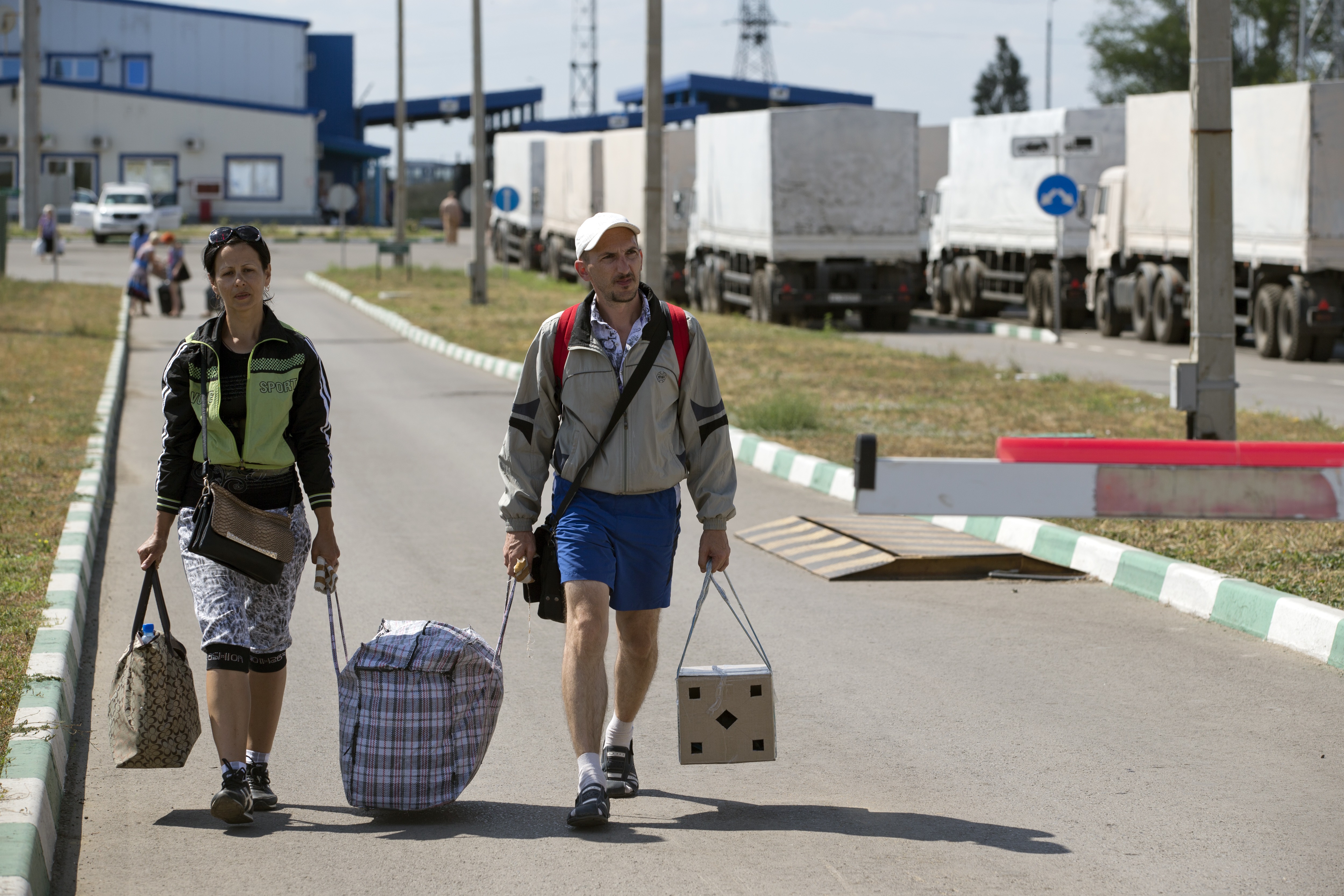Last Chechen camp set to close in Ingushetia
Last Chechen camp set to close in Ingushetia

MOSCOW, June 4 (UNHCR) - The last remaining tented camp for displaced Chechens in the neighbouring republic of Ingushetia is expected to close down in the next few days, with the great majority of its residents electing to return to Chechnya, while some take up the option of remaining in Ingushetia.
The Russian Federal Migration Service (FMS) announced on May 25 that the closure of Satsita camp would begin on June 1. The UN refugee agency expressed concern about the short notice, but was assured by the migration authorities that key utility services - water, electricity, gas - would remain available until all the displaced Chechens have left the camp.
Latest reports from UNHCR protection staff, who are present in the camp on a daily basis, say the situation is calm and all key utilities are still functioning, even as sections of the camp are dismantled in the wake of departures.
Satsita camp was created in February 2001 and once accommodated more than 5,000 internally displaced persons (IDPs). It was largely funded by the Saudi Red Crescent. Along with two other tented camps - Alina and Bella (both mostly funded by UNHCR) - Satsita was originally set up to house IDPs who had been living in railway wagons for more than a year after fleeing the conflict in Chechnya, which had flared up again in the autumn of 1999.
In all, by 2001, there were six tented camps in Ingushetia, housing some 23,000 Chechens - around 15 percent of the total population of 153,000 IDPs who remained in Ingushetia by that time.
The first camp, Aki Yurt, closed amidst considerable controversy in December 2002. The second to go was Bella camp, which shut down in September 2003. After shaping up to be equally controversial, the closure of Bella was in the end resolved more or less to the satisfaction of the camp's inhabitants as well as the local and federal authorities. The subsequent closures of three more camps, prior to Satsita, went relatively smoothly, with the inhabitants being offered a real choice between returning home or staying on in Ingushetia.
On May 31 and June 1 of this year, just a few days after the FMS announcement, a total of just under 500 IDPs left Satsita camp. Of these, 422 people (83 families) were reported to have returned to Chechnya, while another 70 people (12 families) took up the option of moving into alternative accommodation within Ingushetia.
A further 182 people moved out of the camp over the next two days, according to UNHCR's implementing partner, the Danish Refugee Council (DRC), leaving a total of 367 people still registered in the camp as of the end of June 3.
"We expect most, if not all, will have moved out by next week," said Vera Soboleva, UNHCR's spokeswoman in Moscow, after returning from a visit to the camp.
All the families in the camp have been interviewed recently by UNHCR protection officers in order to determine their intentions, she said.
Most of the inhabitants are opting to return to Chechnya, apparently motivated by a range of government incentives. These include a cash grant of 1,000 rubles per person, a 12-month food ration, and the provision of rooms in Temporary Accommodation Centres (commonly known as TACs) or alternative arrangements for private accommodation.
The most significant of all the incentives, however, seems to be official notification of the IDPs' eligibility for compensation for lost property and destroyed houses.
"It is sad to separate from neighbours," Dogmar Umarova, 49, a mother of five children including a newly born baby, said as she stood beside her dismantled tent. "I have led a tented life for two-and-a-half years, and I am tired. I have chosen to return to my native city, Grozny, although I'm still concerned about the security situation there. But I have decided to return while empty rooms in TACs are available. I want to live in better conditions at last."
For those who prefer to remain in Ingushetia after the closure of the last tented camp, alternative shelter is available in temporary settlements. UNHCR and its implementing partners have verified that 107 rooms were available at the end of May. Protection staff continue to systematically interview returnees, all of whom claim to be aware of the availability of alternative shelter in Ingushetia.
The Takayevs are one of the 100 IDP families from Satsita camp who have decided not to return to Chechnya yet. Ramzan, 38, and his wife Zalina have five children, including a 15-year-old son. They will move into the grounds of a private house belonging to an Ingush family, which is located quite close to Satsita.
"I don't want to return to Chechnya," said Ramzan, "as I have no intention of living in a communal apartment for some 28-30 people in one of the TACs. We left Grozny in 1999. First of all we lived in a railway wagon, then in the Alina and Satsita tented camps. I don't want to move again."
"My health is poor," he added, "but I found a job here and can support my family, whereas I don't know whether I would be able to find a job in Grozny. The main task for me now is to get permission from the local authorities to set up our UNHCR box tent in the yard of the Ingush family which generously agreed to host us."
Many of those opting to return to Chechnya have commented that they do not want to move somewhere temporarily, and some have said they consider the current security situation in Ingushetia to be similar to that back home.
As previously agreed between the Saudi Red Crescent and the Chechen authorities, most of the camp facilities such as the administration building, medical point, mosque, and school are being dismantled and relocated to the Achkhoi-Martan and Urus-Martan districts of Chechnya. The kindergarten, run by non-governmental organisation Caritas, is being relocated to one of the temporary settlements in Ingushetia.
Despite the closure of the last camp, the story of displacement from Chechnya is far from over. As of May 31, 2004, DRC reported there were some 54,000 Chechen IDPs still living in Ingushetia, including 24,366 registered in 186 temporary settlements and 29,218 living in private accommodation.








